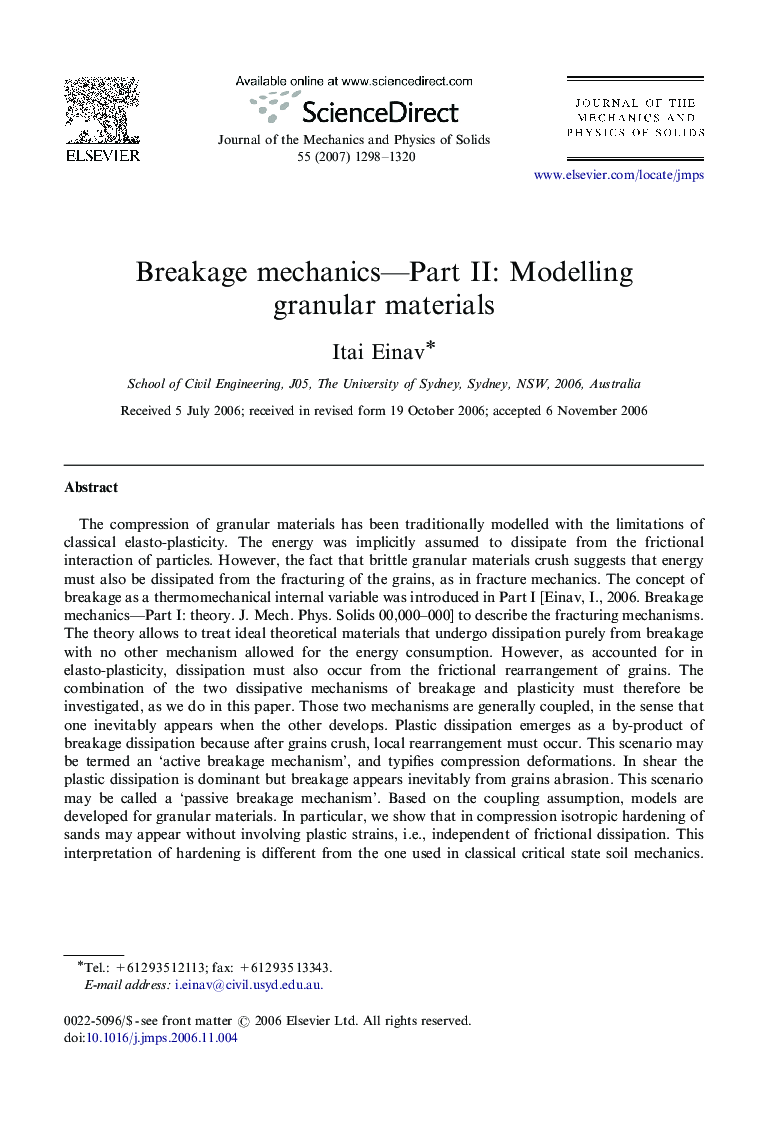| کد مقاله | کد نشریه | سال انتشار | مقاله انگلیسی | نسخه تمام متن |
|---|---|---|---|---|
| 794087 | 1467160 | 2007 | 23 صفحه PDF | دانلود رایگان |

The compression of granular materials has been traditionally modelled with the limitations of classical elasto-plasticity. The energy was implicitly assumed to dissipate from the frictional interaction of particles. However, the fact that brittle granular materials crush suggests that energy must also be dissipated from the fracturing of the grains, as in fracture mechanics. The concept of breakage as a thermomechanical internal variable was introduced in Part I [Einav, I., 2006. Breakage mechanics—Part I: theory. J. Mech. Phys. Solids 00,000–000] to describe the fracturing mechanisms. The theory allows to treat ideal theoretical materials that undergo dissipation purely from breakage with no other mechanism allowed for the energy consumption. However, as accounted for in elasto-plasticity, dissipation must also occur from the frictional rearrangement of grains. The combination of the two dissipative mechanisms of breakage and plasticity must therefore be investigated, as we do in this paper. Those two mechanisms are generally coupled, in the sense that one inevitably appears when the other develops. Plastic dissipation emerges as a by-product of breakage dissipation because after grains crush, local rearrangement must occur. This scenario may be termed an ‘active breakage mechanism’, and typifies compression deformations. In shear the plastic dissipation is dominant but breakage appears inevitably from grains abrasion. This scenario may be called a ‘passive breakage mechanism’. Based on the coupling assumption, models are developed for granular materials. In particular, we show that in compression isotropic hardening of sands may appear without involving plastic strains, i.e., independent of frictional dissipation. This interpretation of hardening is different from the one used in classical critical state soil mechanics. However, frictional dissipation leads to plastic straining that are necessary for the models to be predictive in unloading.
Journal: Journal of the Mechanics and Physics of Solids - Volume 55, Issue 6, June 2007, Pages 1298–1320